Desert Garden at The Huntington: New World
In my previous post I covered the Old World section of the Huntington Desert Garden. It’s located near the top of a rise, adjacent to the Desert Garden Conservatory. From here the land gently slopes downward towards the New World section. On a cold night, the temperature difference between the top of the rise and the bottom can be as much as five degrees (source: The Botanical Gardens at the Huntington, see below). This greatly benefits the aloes, planted higher up. The cacti and other New World succulents planted further down the slope are apparently better able to handle the colder temperatures—not that it ever gets truly cold in Pasadena (zone 10a).
Teaser of what you’re going to see in this post
As I mentioned in my post about the Old World section, the Desert Garden is roughly subdivided into two major sections: Old World and New World. Beyond that, some beds are dedicated to regional flora (Sonoran and Chihuahuan desert; California desert; Madagascar; etc.). However, there is some overlap, and that is by design. According to The Botanical Gardens at the Huntington (see below), the overarching principle is to plant specimens where they will grow best. So you will see ponytail palms (Beaucarnea recurvata) from Central America underplanted with aeoniums from the Canary Islands and, in one spot, agaves next to aloes.
If you’re interested in finding about more about the Desert Garden, and the many other gardens at the Huntington, I can highly recommend The Botanical Gardens at the Huntington written by the Huntington Botanical Staff (2nd ed. San Marino: Huntington Library, 2006). The Desert Garden has its own book, Desert Plants at the Huntington Botanical Gardens by Gary Lyons (San Marino: Huntington Library, 2007). For a historical perspective, check out The Huntington Botanical Gardens, 1905-1949: Personal Recollections of William Hertrich (San Marino: Huntington Library, 1988).
What I noticed more than anything else during this visit was the masterful use of mat-forming succulents. Look at this photo and the one above. Virtually every square inch of soil is covered. The colorful tapestries formed by these sedums, aeoniums, etc. are just as impressive to me as the columnar cacti.
This is going to a long post with almost 70 photos, all of which can be enlarged by clicking. So get a drink of your choice, buckle up, and enjoy the ride!
Quite a juxtaposition: columnar cacti from the Americas and Aeonium ‘Sunburst’ from the Canary Islands (off the Atlantic coast of Africa)
Parodia magnifica from Brazil
Agave gentryi ‘Jaws’
LEFT: Ferocactus glaucescens RIGHT: Agave nickelsiae and NOID Ferocactus
Hechtia glauca from Mexico
Agave titanota
Agave ovatifolia in front of a forest of Cleistocactus strausii
Caesalpinia cacalaco, a beautiful yellow-flowering shrub from tropical Mexico
Opuntia sulphurea
The masses of golden barrel cacti (Echinocactus grusonii) are a sight to see
Agave ovatifolia
The agaves growing among the gold barrels are Agave parryi var. truncata ‘Huntington’, a particularly attractive clone
The Heritage Walk is a 2-acre section renovated in 2003 to closely resemble the original desertscape created by William Hertrich. 60 tons of water-worn granite boulders—a common material back then—were added to the original garden beds. Most of the plants you see here were used in Southern California gardens between 1880 and 1930.
Agave ovatifolia ‘Frosty Blue’ (a much bluer cultivar of the whale’s tongue agave, introduced by Sean Hogan’s Cistus Nursery in Portland) in front of Opuntia gosseliniana
Emerging Dyckia flowers
Yellow-flowering form of Aloe arborescens growing in the New World section (although an Old World plant)
Even the Huntington isn’t immune from aloe mites
More aloes: yellow-flowering form of Aloe arborescens (left), xxx (right)
Echinopsis 'Apricot Glow'
Opuntia monacantha
Creeping devil (Stenocereus eruca)
Creeping devil (Stenocereus eruca), small Boojum tree (Fouquieria columnaris) on the right
New World vs. Old World: NOID Cereus cactus providing shelter for Aloe commutata
New World vs. Old World, part 2: NOID Cereus cactus and Crassula arborescens
Prickly pear (Opuntia) fruit on top of a golden barrel cactus; found like that, possibly placed there by a docent?
Agave parryi (left)
Agave parryi and golden barrel cactus (Echinocactus grusonii)
Agave americana var. protoamericana in front of a very old specimen of Neobuxbaumia euphorbioides
Agave parryi
Agave applanata
LEFT: Agave parrasana (front) and Agave colorata (back) RIGHT: Agave colorata
The yellow-flowering aloe is a hybrid called 'Sophie'. The agave was labeled Agave aff. parryi. ("aff." stands for "affinis" and means that this agave closely resembles Agave parryi but that it cannot be 100% identified.)
This guy has got it right—a tripod definitely helps get the best shots possible
Ponytail palm (Beaucarnea recurvata) and Agave attenuata 'Boutin Blue'
Agave americana ‘Marginata’, one of the largest of the Agave americana varieties. A plant like this takes up more room than a compact car!
Edge of the Desert Garden, looking towards the Jungle Garden
Same spot, looking in the other direction, towards the Desert Garden
Agave parryi var. truncata ‘Huntington’
Agave parryi var. truncata ‘Huntington’
Now we're in one of the most impressive parts of the lower Desert Garden. The masses of golden barrel cactus (Echinocactus grusonii) is a truly unforgettable sight. The icy blue agaves are Agave parryi var. truncata ‘Huntington’, considered by many to be the most attractive clone of this variety.
Agave 'Blue Flame'
Possibly the most beautiful spot to sit in the entire garden
White floss silk tree (Ceiba speciosa), a stunner of a tree from South America. Its bottle-shaped trunk is covered with spiky prickles.
Flowering flapjack plants (Kalanchoe luciae), another crossover from South Africa
Agave salmiana
One last look towards the New World section
Now we’re back at the top of the hill where the Desert Garden begins. The plantings here are a mix of Old World (aloes) and New World (agaves):
Tree aloe (Aloidendron barberae) and foxtail agave (both the regular green form, Agave attenuata, and the blue form, Agave attenuata ‘Boutin Blue’)
Agave attenuata ‘Boutin Blue’
The final set of photos is from the transition area between the upper Desert Garden and the California Garden. This recently planted strip is home to a whole slew of agaves, including these beauties:
Agave applanata, regular form
Agave applanata, variegated form (‘Cream Spike’)
Agave potatorum ‘Kichijokan’
Agave impressa
While I currently have no concrete plans, I’m already dreaming of another visit to the Huntington. Maybe next spring!
RELATED POSTS:
-
December 2015 Desert Trip index (Succulents and More)



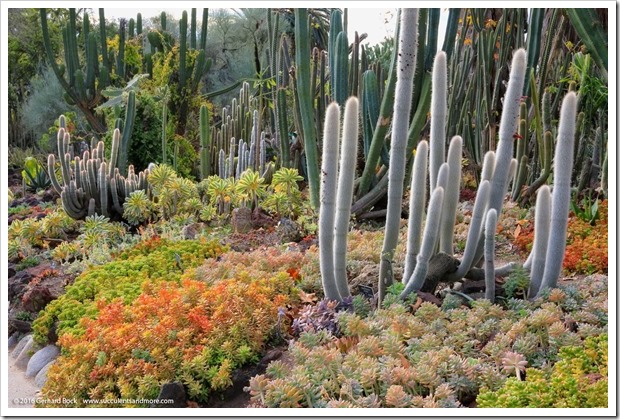

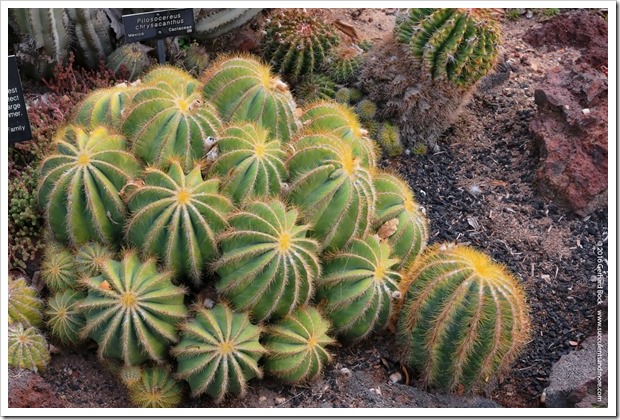


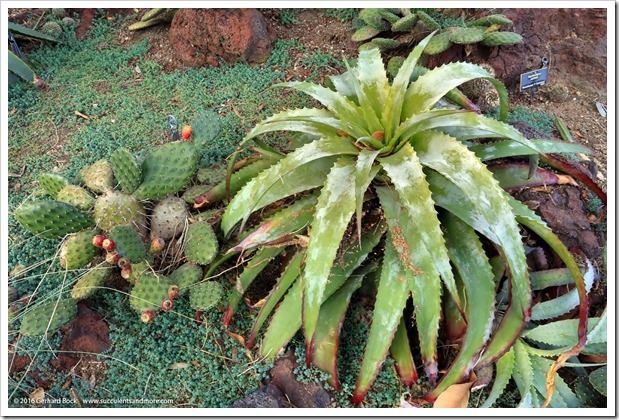

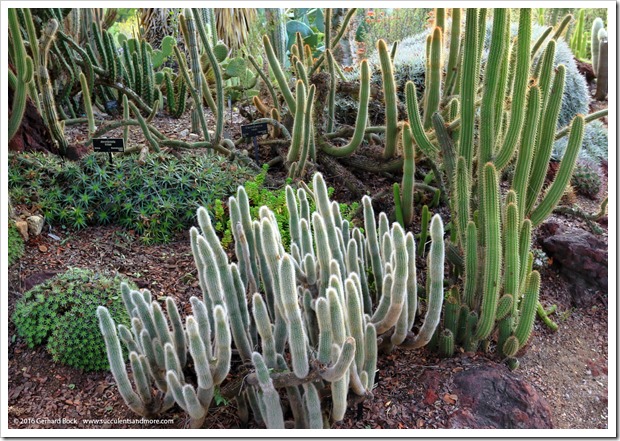
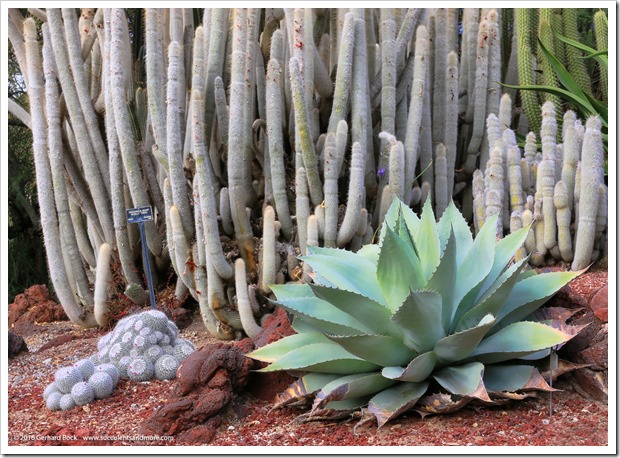
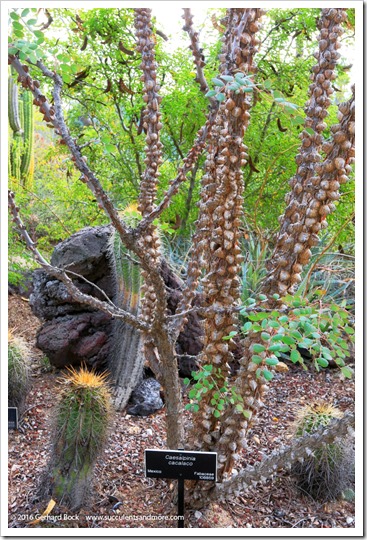





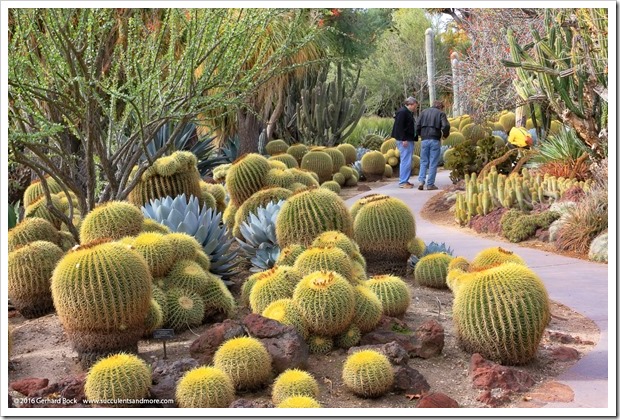


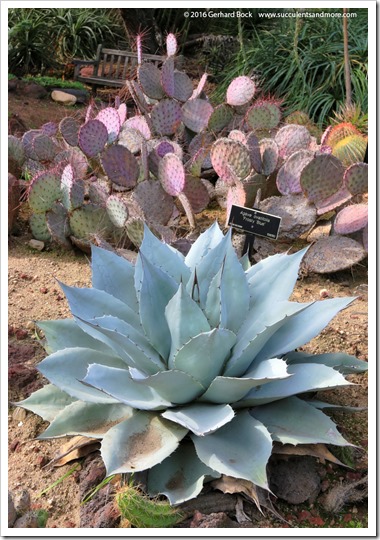



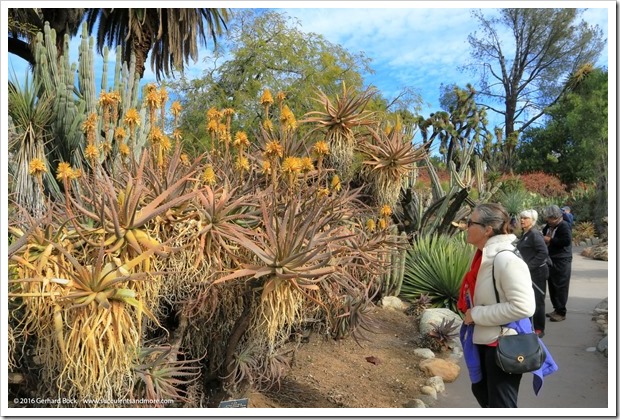



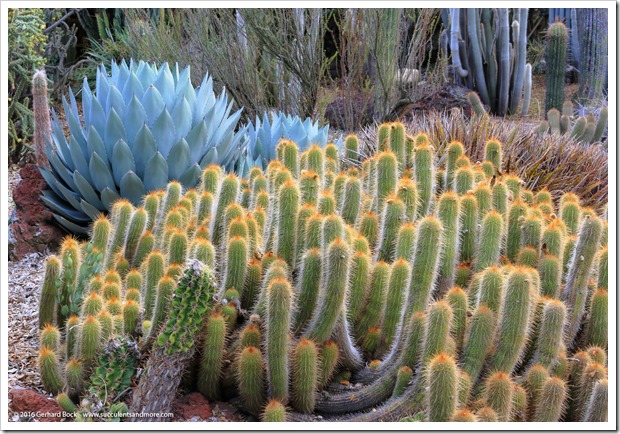
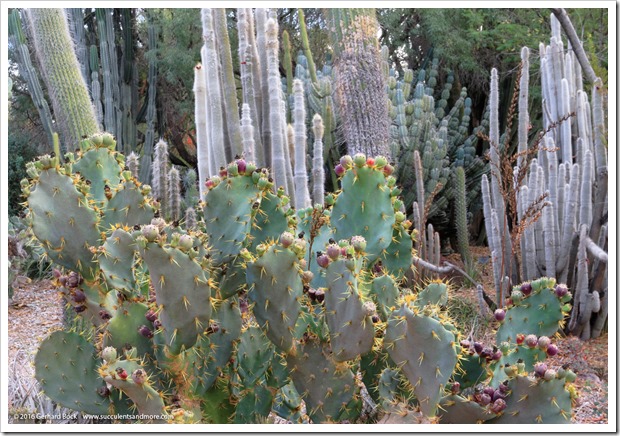






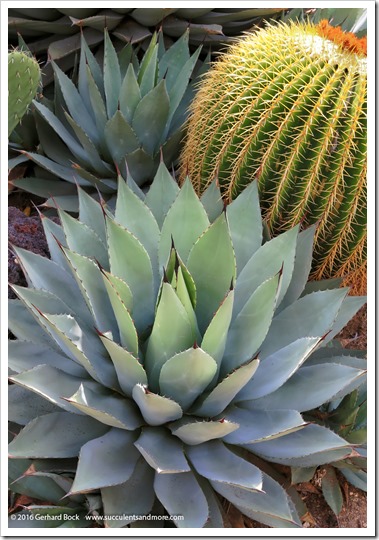


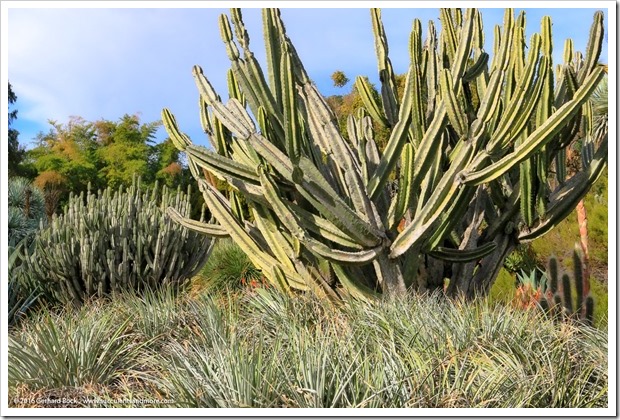



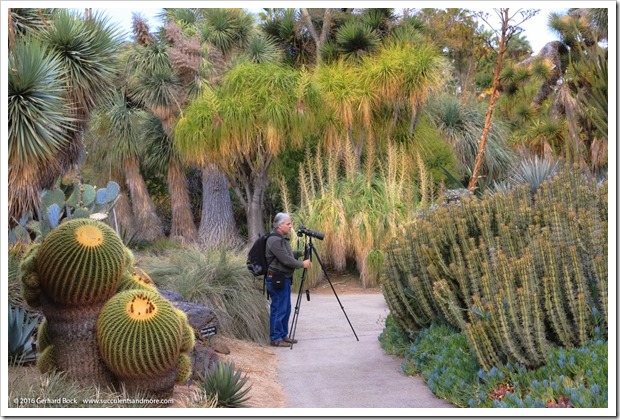




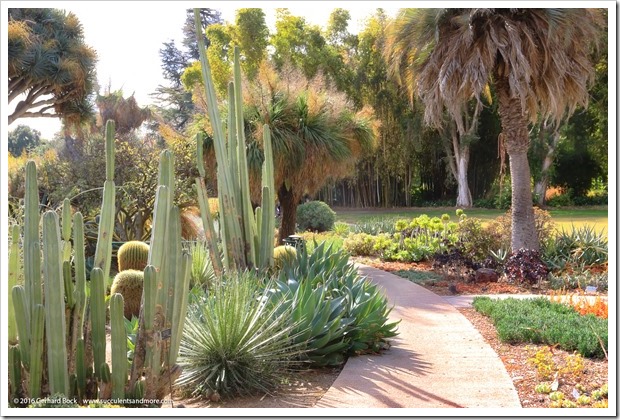






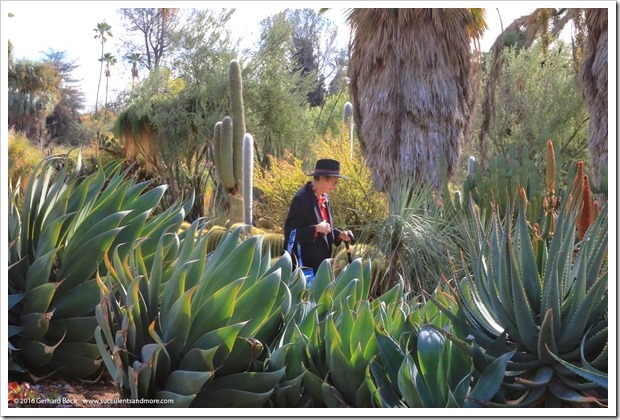

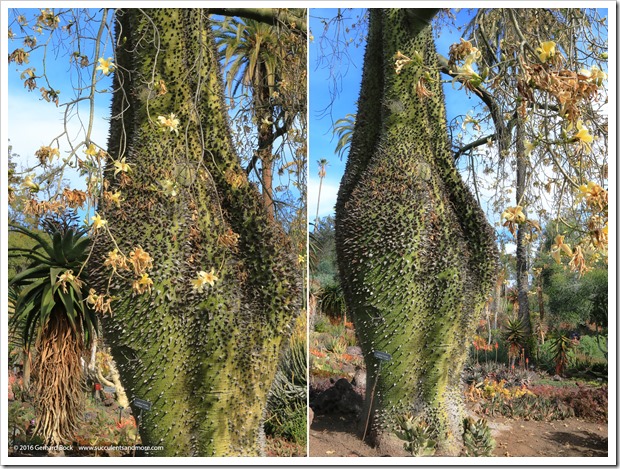


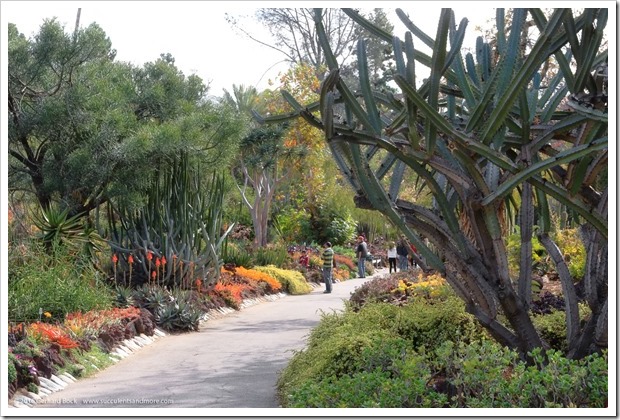
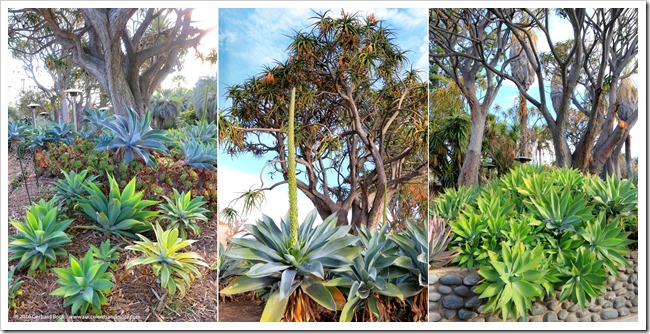
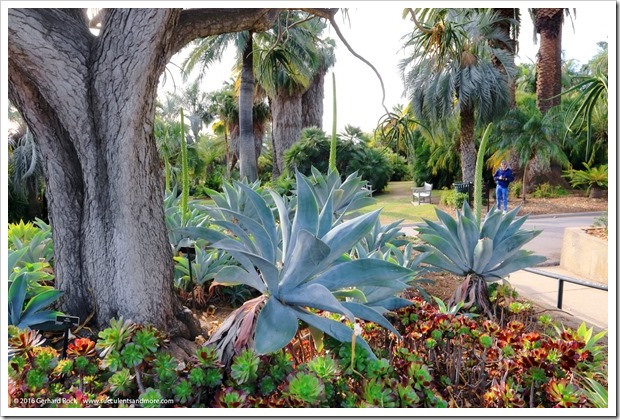

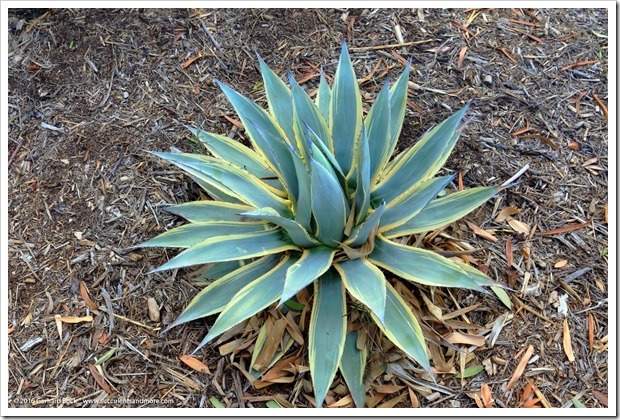
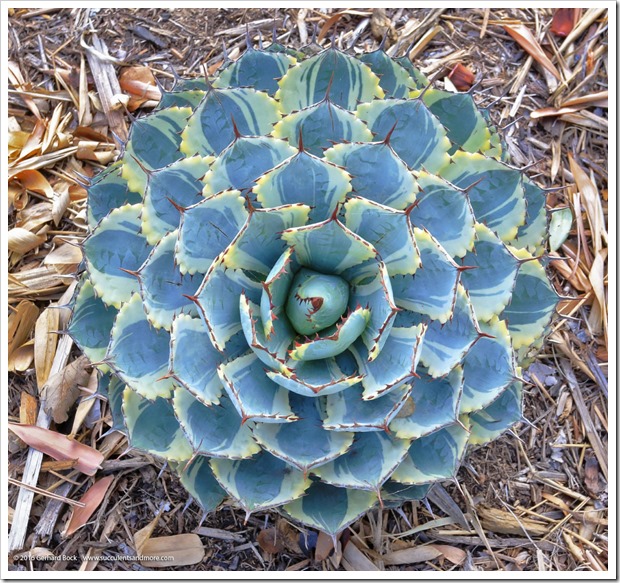

Seeing the barrel cactus en masse always makes me think about investing in some - there's very little that makes the same kind of statement. Thanks for sharing your photos, Gerhard, and I hope to see you on your next visit.
ReplyDeleteOh my Gerhard , your photos are just stunning ! I bigified each and every one.
ReplyDeleteAbsolutely stunning place Gerhard, I'd really want to see this in person soon!!
ReplyDeleteWhat else can I say? Fantabulous!
ReplyDeleteGreat photos and text, too. Informative. I will have to look for those books.
ReplyDeleteSome of the people in the photos looked familiar. As to the most beautiful Agave parryi truncata clone, is there an A. parryi truncata that is not beautiful?